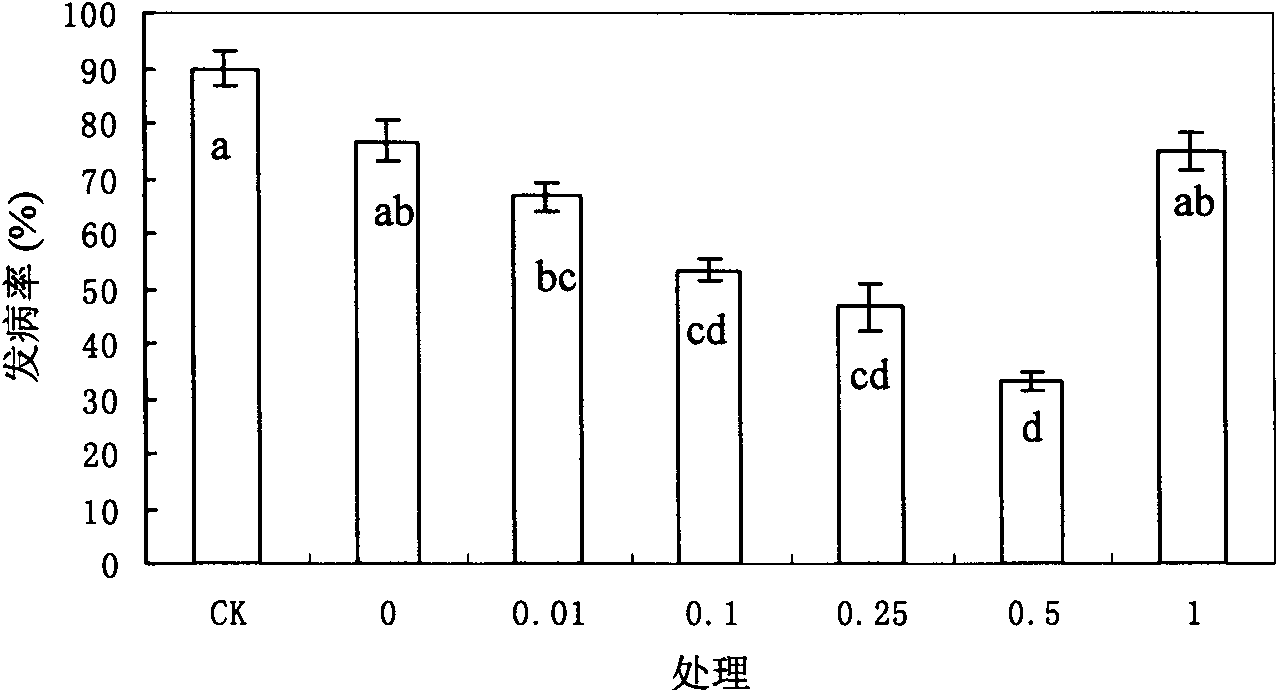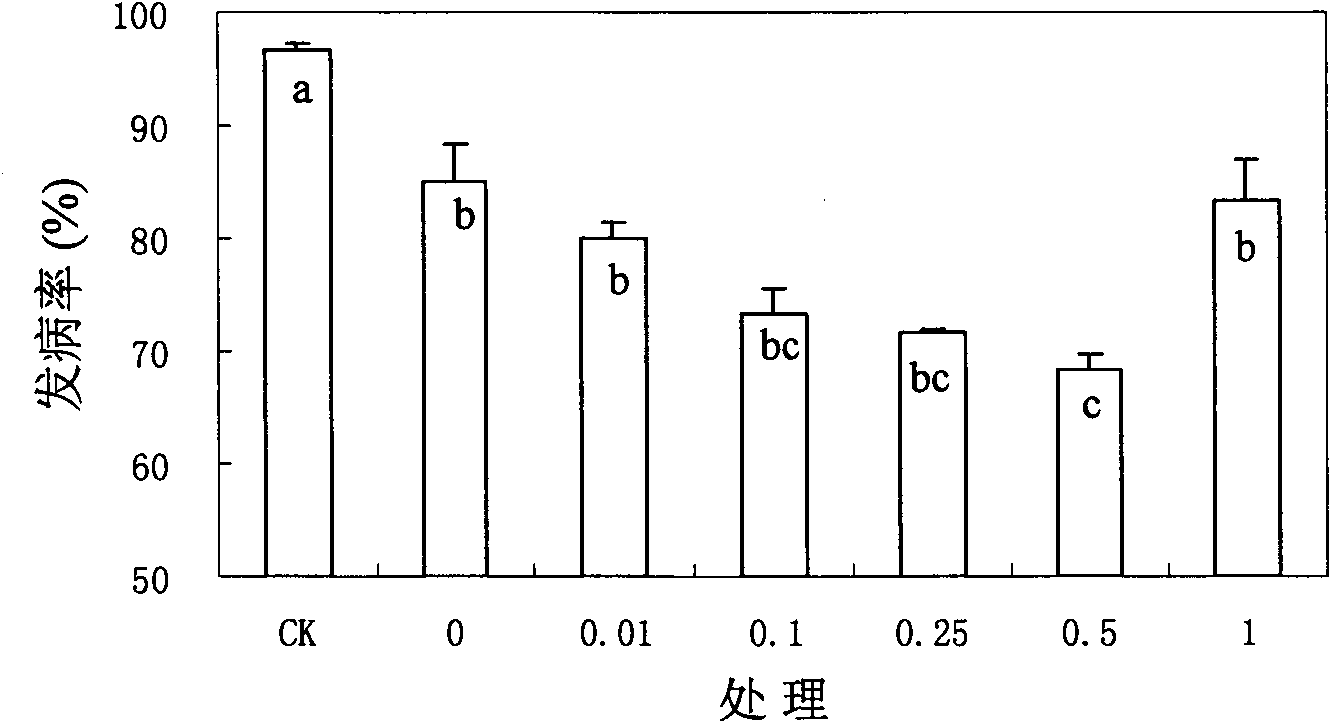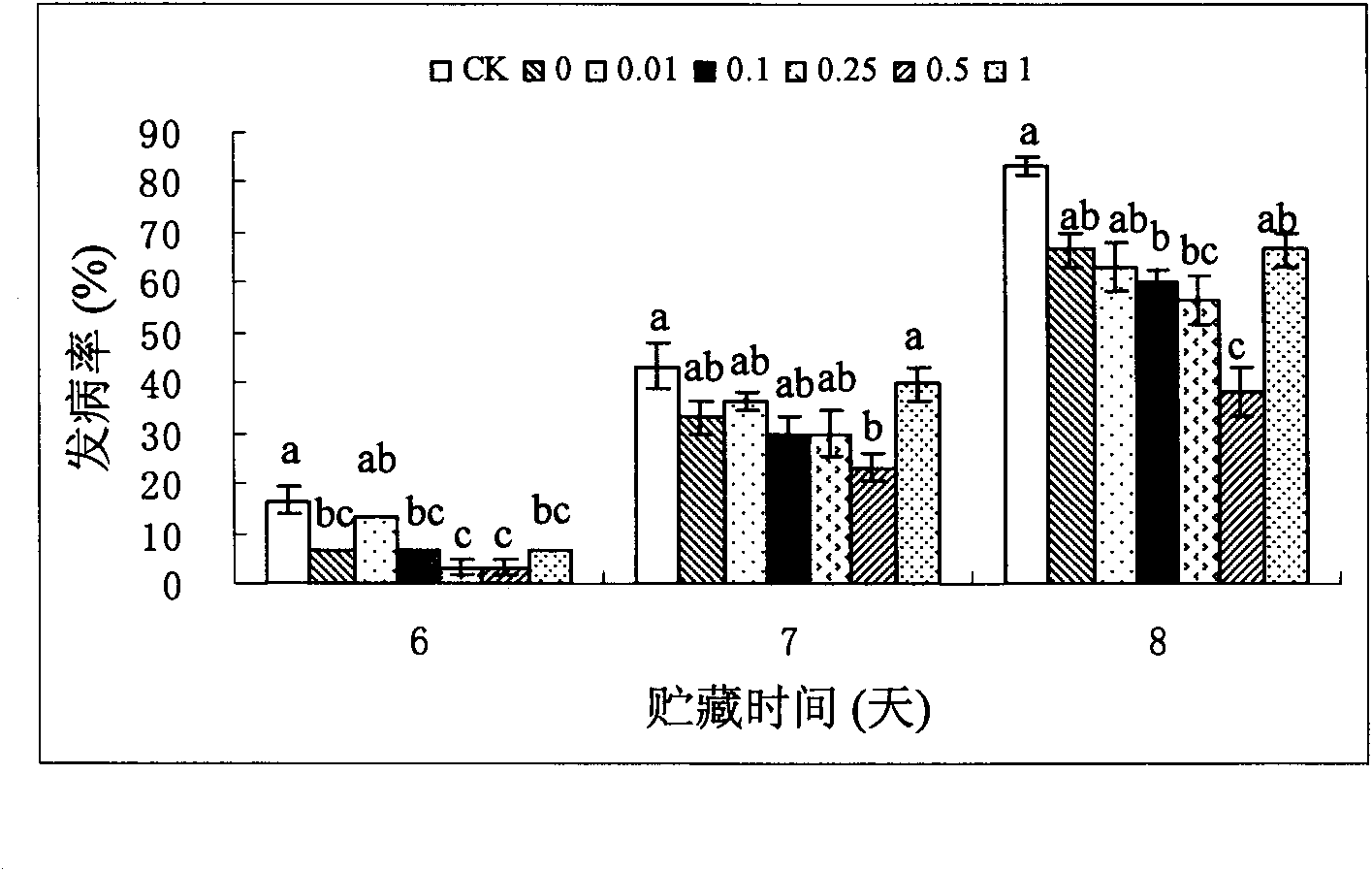Method for enhancing effect of rhodotorula glutinis on biologically controlling postharvest disease of fruit
A technology for fruit postharvest diseases and Rhodotorula viscosum, which is applied in the fields of fruit and vegetable preservation, food science, food preservation, etc., and can solve problems affecting the effectiveness of postharvest antagonistic yeast biocontrol
- Summary
- Abstract
- Description
- Claims
- Application Information
AI Technical Summary
Problems solved by technology
Method used
Image
Examples
Embodiment 1
[0023] Embodiment 1: the inhibitory effect of chitosan-induced cultivation of Rhodotorula glutinosa on fruit diseases
[0024] 1. Test plan
[0025] After the fruit has been processed, wounds of uniform size and depth are formed on the equatorial part of the surface of each fruit with a sterile punch. Wherein the superficial wound of strawberry is 3mm (diameter) * 3mm (deep), the superficial wound of peach fruit is 5mm (diameter) * 3mm (deep). Add 30 μl (1) yeast suspension cultured by NYDB medium; (2) yeast suspension cultured by chitosan supplemented medium (NYDB+chitosan); (3) sterile water (as control). After 2h, an equal amount of 30 μl of pathogenic spores (B. cinerea concentration of 1×10 5 spores ml -1 ; P.expansum concentration was 5×10 4 spores / mL, the concentration of R. stolonifer was 1×10 4 spores / mL). After natural drying, the fruit is put into a plastic basket and sealed with a preservative film, cultivated in a constant temperature incubator (water activ...
Embodiment 2
[0035] Example 2: Chitosan-induced cultivation of Rhodotorula viscosus on the natural rot and storage quality of fruit
[0036] 1. Test plan
[0037] After the test fruit was picked, soak the fruit for 30s directly with the following treatments: (1) Rhodotorula viscosus suspension cultured in NYDB medium; (2) Yeast suspension cultured in chitosan-supplemented medium (NYDB+chitosan); (3) Sterile water (as a control). Then put the fruit in a plastic basket, air-dry and seal it with plastic wrap. Strawberries were stored in a 4°C freezer, and after 20 days, they were transferred to a 20°C constant temperature box for storage. After 7 days, the fruit rot was observed, and the rot rate was calculated; peaches were stored in a 4°C freezer, and after 30 days, they were transferred to 25°C. decay rate, and storage quality analysis. Each treatment was repeated 3 times, each time 10 fruits were repeated, and the whole experiment was repeated 2 times.
[0038] The storage quality ana...
PUM
 Login to View More
Login to View More Abstract
Description
Claims
Application Information
 Login to View More
Login to View More - R&D
- Intellectual Property
- Life Sciences
- Materials
- Tech Scout
- Unparalleled Data Quality
- Higher Quality Content
- 60% Fewer Hallucinations
Browse by: Latest US Patents, China's latest patents, Technical Efficacy Thesaurus, Application Domain, Technology Topic, Popular Technical Reports.
© 2025 PatSnap. All rights reserved.Legal|Privacy policy|Modern Slavery Act Transparency Statement|Sitemap|About US| Contact US: help@patsnap.com



